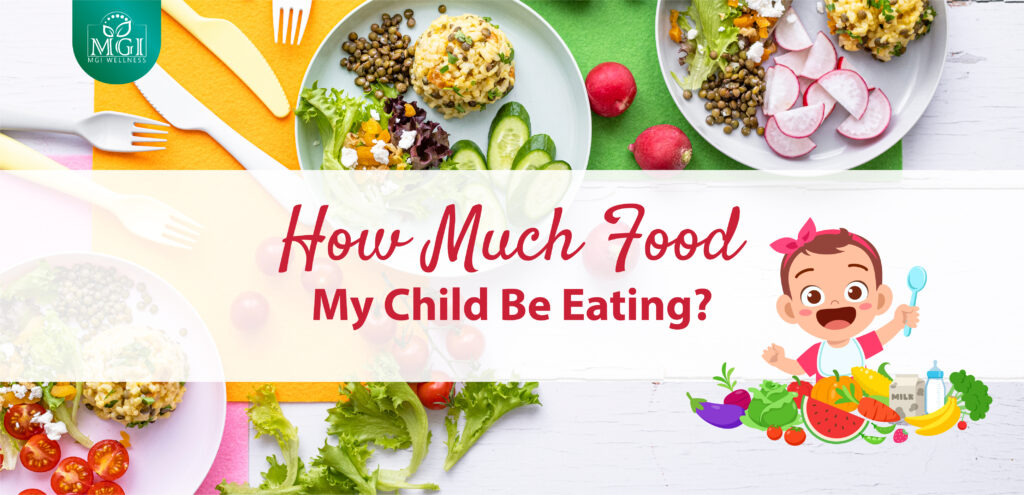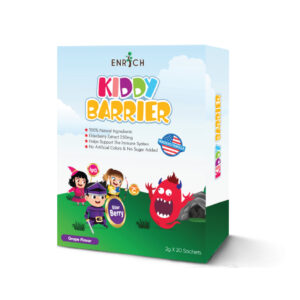Wellness
How much food should my child be eating?
A child who is undernourished is at higher risk of falling ill more often as under nutrition impairs the immune system. Under nutrition can be due to lack of calories, proteins, fats and carbohydrates, as well as a low intake of specific vitamins and minerals, but often it is a combination of these factors that leads to a lowered immunity.
It is usually not required to put a number into your growing child’s calorie consumption. Nevertheless, knowing how many calories your child needs in a day can help you plan your child’s nutritional intake and ensure that he/she in on the right track towards achieving optimal growth and health.
| Food group | Age | ||
| 6 – 8 months | 9 – 11 months | 1 – 2 years | |
| Cereals, cereal-based products and starchy vegetables | 1½ cups porridge | 2½ cups porridge | 2 cups rice |
| Fruits | ¼ slice papaya OR
1 small size banana |
1 slice papaya OR
2 small size bananas |
1 slice papaya OR
2 small size bananas |
| Vegetables | 2 tablespoons cooked vegetables | 4 tablespoons cooked vegetables | 4 tablespoons cooked vegetables |
| Meat, poultry, fish and legumes | 2 teaspoons any type of meat OR ¼ fish | 2 teaspoons any type of meat OR ¼ fish OR egg yolk | ½ medium size ikan kembung OR 1 egg |
| Milk | Breastfeeding on demand | Breastfeeding on demand | Breastfeeding on demand OR
3 glasses of milk |
| Fats & oils | 1 teaspoon added oil and fat | 1½ teaspoons added oil and fat | 1 teaspoon added oil and fat |
| Food texture | Pureed/ mashed with a liquid consistency | Finely chopped/ mashed foods and also some finger foods | Chopped/ finger foods and slowly introduce family foods |
Recommended food portion for children from 6 months through 2 years of age
It is preferably to give infants and young children freshly prepared home-cooked food without adding salt, sugar or sauces. Avoid giving chunks of hard food larger than ½ of your thumb nail and supervise children during mealtimes to avoid choking. In addition, it is important to provide children with foods high in protein, iron and zinc such as meat, poultry, fish or eggs every day. However, avoid giving egg white to babies aged below 1 year.
| Food group | Age | ||
| 3 years | 4 – 6 years | 7 – 9 years (Girl) | |
| Cereals, cereal-based products and starchy vegetables | 2 | 3 | 5 |
| Fruits | 2 | 2 | 2 |
| Vegetables | 2 | 2 | 3 |
| Meat, poultry, fish and legumes | 1 ½ | 2 | 2 ½ |
| Milk | 2 | 2 | 2 |
Recommended serving sizes for children of different age groups
| Food group | Age | ||
| 7 – 9 years (Boys) | 10 – 12 years (Girl) | 10 – 12 years (Boy) | |
| Cereals, cereal-based products and starchy vegetables | 5 | 6 | 7 |
| Fruits | 2 | 2 | 2 |
| Vegetables | 3 | 3 | 3 |
| Meat, poultry, fish and legumes | 3 | 3 | 3 ½ |
| Milk | 2 | 2 | 2 |
Recommended serving sizes for children of different age groups
| One serving of cereals, cereal-based products and starchy vegetables | |
| Bee hoon, soaked | 1½ cups |
| Macaroni, spaghetti | 1 cup |
| Cream crackers | 6 pieces |
| Bread | 2 slices |
| Thosai (diameter: 20cm) | 1 piece |
| Chappati (diameter: 20cm) | 2/3 piece |
| Potato | 2 small |
| Rice, cooked | 1 cup |
| Rice porridge, plain | 2 cups |
| Sweet potato/ yam/ tapioca | 1 cup |
| One serving of fruits | |
| Banana | 1 small |
| Orange/ apple/ pear | 1 medium |
| Papaya/ pineapple/ watermelon | 1 slice |
| Prunes | 3 pieces |
| Guava | ½ whole |
| Grapes | 8 pieces |
| Dates, dried | 2 pieces |
| Raisin | 1 dessert spoon |
| One serving of vegetables | |
| Raw vegetables | 1 cup |
| Cooked vegetables | ½ cup |
| One serving of fish, poultry and meat | |
| Eggs | 2 whole |
| Lean meat | 3 matchbox sizes |
| Chicken, drumstick | 1 whole |
| Fish (ikan kembong/ selar) | 1 medium |
| Fish (ikan tenggiri) | 1 piece |
| Squid | 2 medium |
| Prawn | 12 medium |
| One serving of legumes | |
| Chickpea/ dhal | 1 cup |
| Firm tofu (tau kua) | ½ piece (60 g) |
| Soft tofu | ¾ piece (90 g) |
| Unsweetened soybean milk | 1 ½ glass |
| Tempeh | 1 piece (45 g) |
| One serving of milk and dairy products | |
| Cheese | 2 thin slices |
| Milk | 1 glass |
| Milk powder | 4 rounded tablespoons |
| Yogurt, plain | 1 cup |
One serving food portion for different food group
Note:
1 cup = 200 mL
1 glass = 250 mL
1 dessertspoon = 10 mL
1 tablespoon = 15 mL
It is important to remember that eating a variety of foods keeps our meals interesting and flavourful. It is also the key to a healthy and balanced diet because each food has a unique mix of nutrients. Ensure that the daily diet consists of foods based on the Malaysian Food Pyramid and vary food choices within each food group during meals. Reduce fats, oils, salt, sugar and flavour enhancers such as monosodium glutamate (MSG), sauces (e.g. soya sauce) and flavouring cubes in cooking.
References:
- Pemakanan Bayi Dan Kanak-Kanak Kecil: Bahagian Pemakanan. Pemakanan Bayi dan Kanak-Kanak Kecil | Bahagian Pemakanan. (n.d.). Retrieved January 25, 2022, from https://nutrition.moh.gov.my/pemakanan-bayi-dan-kanak-kanak-kecil/
- Nutrition Division, Ministry of Health Malaysia. (2013). Malaysian dietary guidelines for children and adolescents.
Health Food



Say, you got a nice blog post.Much thanks again.
I was looking through some of your blog posts on this internet site and I believe this site is very informative! Continue putting up.
Rattling nice style and design and superb content material, nothing at all else we need : D.
Thanx for the effort, keep up the good work Great work, I am going to start a small Blog Engine course work using your site I hope you enjoy blogging with the popular BlogEngine.net.Thethoughts you express are really awesome. Hope you will right some more posts.
Very efficiently written article. It will be helpful to anybody who usess it, including myself. Keep doing what you are doing – i will definitely read more posts.
whoah this weblog is great i love reading your posts. Stay up the good paintings! You realize, many individuals are searching round for this info, you can help them greatly.
Aw, this was a really nice post. In thought I would like to put in writing like this moreover ? taking time and precise effort to make an excellent article? however what can I say? I procrastinate alot and not at all seem to get one thing done.